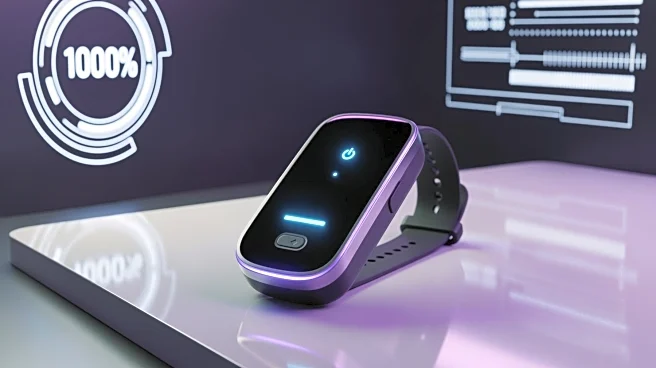What's Happening?
Biolinq, a diabetes technology startup, has received FDA approval to market its first glucose sensor, Biolinq Shine. The device is designed for people with Type 2 diabetes and features a unique design that includes a built-in indicator to show glucose levels.
Unlike traditional continuous glucose monitors (CGMs), Biolinq's sensor sits in the skin rather than being inserted below it, offering a less invasive experience. Jared Tangney, Biolinq's CTO and co-founder, explains that the device aims to make glucose monitoring less intimidating and more user-friendly, with plans to expand its use to Type 1 diabetes patients.
Why It's Important?
The introduction of Biolinq's new glucose sensor represents a significant advancement in diabetes management technology. By offering a less invasive and more intuitive device, Biolinq aims to improve the quality of life for people with diabetes, particularly those with Type 2 diabetes who may find traditional CGMs daunting. This innovation could lead to broader adoption of glucose monitoring, improving health outcomes and empowering patients to manage their condition more effectively. The device's potential to measure additional biomarkers also opens new possibilities for comprehensive health monitoring.
What's Next?
Following FDA approval, Biolinq is preparing for the commercialization of its glucose sensor. The company is scaling up manufacturing and plans to release the device to the market soon. As Biolinq expands its product offerings, it may explore additional biomarkers for monitoring, potentially broadening its impact on health management. The success of Biolinq Shine could influence the development of future diabetes technologies, encouraging other companies to innovate in creating user-friendly and effective health monitoring solutions.
Beyond the Headlines
Biolinq's approach to glucose monitoring reflects a broader trend in medical technology towards personalized and less invasive health solutions. The company's focus on user experience and ease of use highlights the importance of patient-centered design in medical devices. This shift could lead to increased patient engagement and adherence to health management practices, ultimately improving health outcomes. Additionally, the potential to monitor multiple biomarkers with a single device could revolutionize how individuals track and manage their overall health.

















